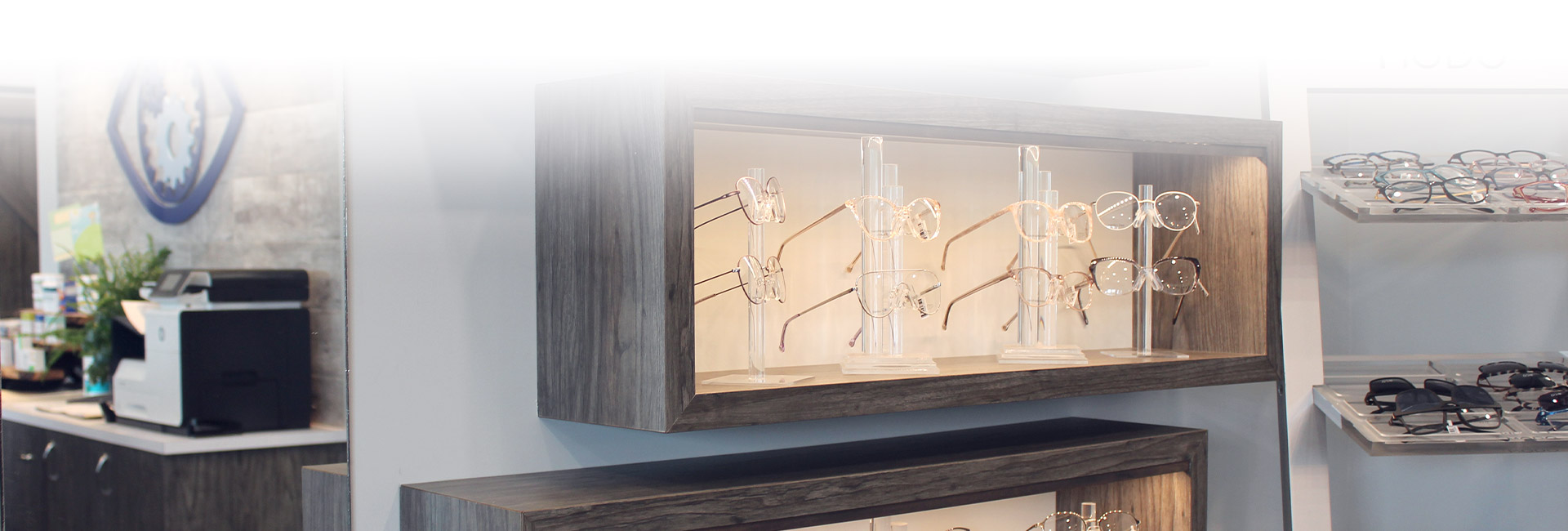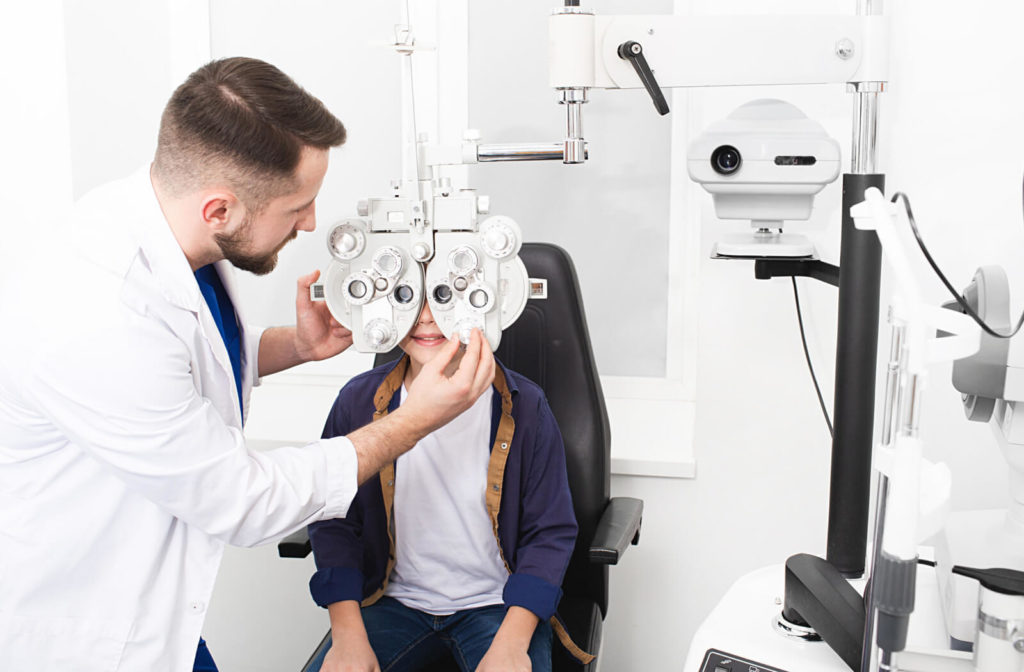Children grow up fast, and their vision grows with them. Their eyes help them learn, develop, and play. Regular eye exams can help them get the most out of their adventures.
A comprehensive eye exam allows your optometrist to track your child’s visual development, and detect conditions and refractive errors that, without intervention, might progress into severe vision problems. Your optometrist can offer personalized plans to deal with these conditions, but only if they have all the necessary information.
Frequency of Children’s Eye Exams
According to the Canadian Association of Optometrists (CAO), regular kids’ eye exams can lower the risk of vision and ocular health conditions. The CAO suggests the following exam schedule for children:
- 6–9 months: 1 exam
- 2–5 years: 1 exam
- 6–19 years: Annual exams
If your child has a family history of eye conditions or has been diagnosed with one, their optometrist might ask to see them more frequently.
During an eye exam, your optometrist can diagnose various eye conditions that could affect your child.

Strabismus (Crossed eye)
It’s normal for an infant under the age of 6 months to have eyes that occasionally appear slightly crossed or out of alignment. However, if their eyes are significantly misaligned after 6 months of age, your child may have strabismus.
Strabismus is also sometimes called crossed eye and refers to a condition in which one eye does not point in the same direction as the other eye. Notably, this is not always related to eye muscle weakness. Instead, strabismus is caused by the brain’s inability to coordinate your child’s eye movements.
Children won’t grow out of strabismus, but their optometrist can help treat it. Depending on your child’s unique needs, there are a few different treatments for strabismus. These can include:
- Eyeglasses
- Prisms
- Vision therapy
- Surgery
If left untreated, the brain may begin to favour the straight eye to avoid double vision. This favouring can result in poorer vision in the turned eye, leading to amblyopia.
Amblyopia (Lazy Eye)
Amblyopia is a condition where one eye doesn’t see nearly as well as the other, even when wearing glasses. Over time, the brain favours the strong eye, causing the weaker eye to get worse.
The symptoms of amblyopia are only sometimes obvious since the better eye usually has good enough vision to take over visual tasks. Some children may only notice poor vision if their other eye is covered.
There are a few treatments for amblyopia that may be used alone or in combination with each other:
- Prescription lenses
- Prisms
- Vision therapy
Refractive Errors
A refractive error occurs when the shape of your eye prevents light from focusing correctly onto your retina. During an eye exam, your optometrist can measure how light interacts with your child’s eye. This can tell them if a refractive error is causing your child’s vision problems.
Nearsightedness (Myopia)
Myopia, also known as nearsightedness, is a common vision condition affecting nearly 30% of Canadians. It’s typically first diagnosed during early childhood and can continue to progress until it stabilizes, usually around the age of 20.
Myopia can occur when your child’s eyeball has grown too long, or the corneal curvature is too steep. The light rays are then focused in front of the retina rather than on it. As a result, distant objects may appear blurry to your child, while nearby objects remain clear.
There is currently no cure for myopia, though your optometrist can control its progression with eyeglasses, contact lenses, or eye drops.
Farsightedness (Hyperopia)
Hyperopia effectively acts as the opposite of myopia. It’s a refractive error in which your child’s eyeball is too short, or their cornea has too little curvature. In this case, nearby objects may appear blurry while faraway objects remain clear.
Many people have some degree of hyperopia, even if they don’t know it. It typically only becomes a problem if it significantly affects a person’s ability to see. In mild cases, your child’s eyes may compensate to see without needing corrective lenses.
Just because hyperopia doesn’t always need treatment doesn’t mean it’s harmless. It can result in difficulty maintaining focus on close-up objects. For kids, this can make it hard to read books and result in eye strain and headaches.
Astigmatism
Astigmatism is a general blurriness at all ranges of vision. It can occur at the same time as near or farsightedness.
The cornea, the clear front dome of your eye, and the lens inside your eye are typically round. However, in the case of astigmatism, the cornea and/or lens becomes more oval or cylindrical. This irregular shape scatters light across the retina and leads to different levels of blurriness or shadowed vision depending on the person.
While astigmatism can result from an eye injury, it can also develop early in life and is one condition commonly assessed at an eye exam.
Personalized Care for Your Family
Your child’s vision is precious. With it, they learn and grow to see the world in their own unique way. Beyond 20/20 Optometry wants the world they see to be as clear as it can be. Regular eye exams track their development and allow us to treat eye health conditions if they arise.
If you have any concerns about your child’s vision, book an appointment with our friendly team today.




